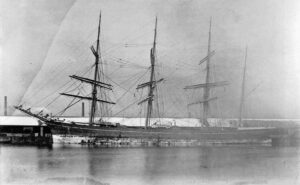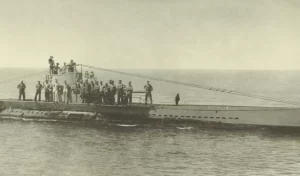
The crew of the Zebrina met a mysterious end.
The Zebrina was a schooner-rigged, three-masted sailing barge of 189 tons, built in 1873 in Whitstable, England. The owners’ original goal was for the ship to serve as a trading vessel along the Rio de la Plata in South America, which it did for the first seven years. Four decades later, following an uneventful career, the Zebrina joined a fraternity that no ship desired to be a part of: it became a ghost ship.
A ROUTINE VOYAGE
In October 1917, with World War I raging across Europe, the Zebrina departed from Falmouth, a port on the south coast of Cornwall, with a crew of five, including Captain Archibald Martin. The ship was bound for Saint-Brieuc in France with a cargo of Swansea coal. It had made this same voyage a number of times previously.
Two days later the French Coast Guard found the Zebrina aground on France’s rocky coast, south of Cherbourg. The vessel was undamaged; a galley fire still burned, and the dining table had been laid out for a meal. But the captain and crew were nowhere to be found.

Did the crew perish aboard a German U-boat?
One convoluted explanation had the crew taken aboard a German U-boat, which then spotted an Allied warship and fled the scene before it could sink the Zebrina. The warship ultimately sank the U-boat with all hands on board. Another had to do with bad weather. The crew had been washed overboard, and the ship had sailed on without them.
In any case, the fate of the crewmen remains a mystery that likely will never be solved. The Zebrina, a ghost ship, was towed into Cherbourg and later put back into service. She ended her days as a houseboat.
And she ended her existence in 1953, destroyed by a fire.
